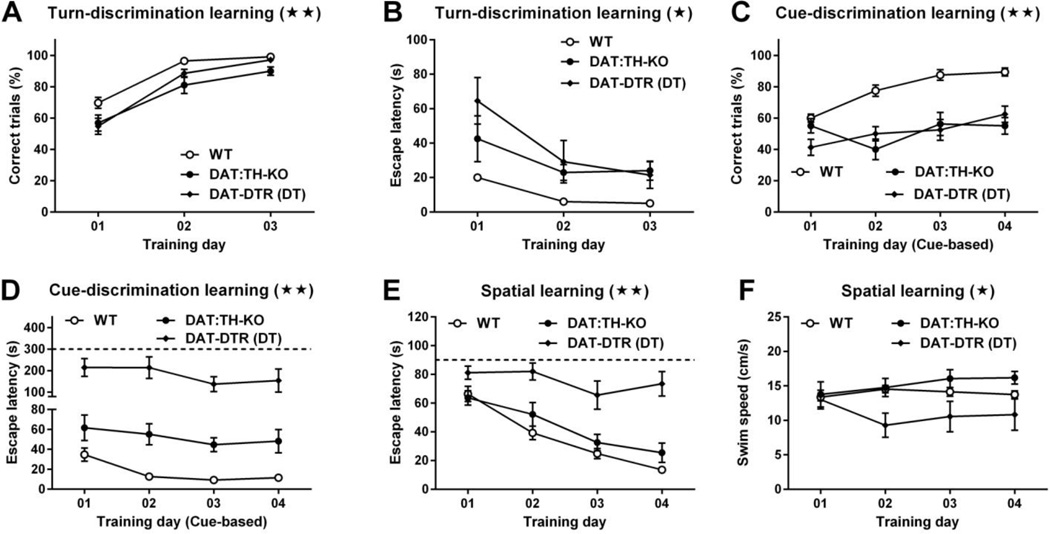Fig. 4.
Turn- dependent, cue-dependent and spatial learning. Panels A–B show turn-dependent learning data from WT (N = 34), DAT:TH-KO (N = 19) and DAT-DTR (DT) (N = 21) mice. (A) Percentage of correct trials and (B) latency to climb onto the platform during 3-day training of turn-based water escape in the U-shaped water maze. Panels C–D show cue-dependent learning data from WT (N = 16), DAT:TH-KO (N = 8) and DAT-DTR (DT) (N = 8) mice. (C) Percentage of correct trials and (D) latency to climb onto the platform during 4-day training of cue-based water escape in the U-shaped water maze. (E) Latency to climb onto the hidden platform during training of spatial learning in the Morris water maze by WT (N = 18), DAT:TH-KO (N = 8) and DAT-DTR (DT) (N = 9) mice. (F) Swim speed of WT (N = 18), DAT:TH-KO (N = 8) and DAT-DTR (DT) (N = 9) mice in the Morris water maze procedure. Significant group effects for all learning tests are marked with stars in the panel titles (★★ p < 0.01, ★ p < 0.05). All data are shown as means ± SEM.

